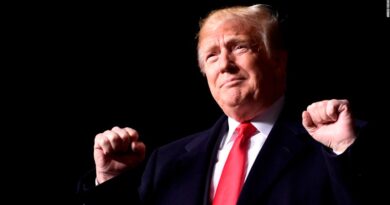Book review: John Straley’s latest weaves together lively plots, conspiracy theories and modern sensibilities
“Blown by the Same Wind”

By John Straley; Soho Crime, 2022; 207 pages; $27.95.
John Straley, one of Alaska’s best-known and best-loved writers, continues to deliver. Along with his eight (so far) Cecil Younger Investigation novels, he’s now produced a fourth volume in the newer Cold Storage series. Cold Storage is his fictional Southeast Alaska town made up of boardwalks, fishing boats and a cannery, a bar and cafe, and a cast of oddball characters.
In “Blown by the Same Wind” — a title suggested by a quote from the theologian Thomas Merton — Straley has brought together an intriguing mix of historical events to play within his wild imagination. The year is 1968, and the social upheaval of the time has come even to Cold Storage. A young man has returned from the Vietnam War with dark memories and a drinking problem. A teenage girl can’t wait to get away from her pot-smoking parents and the limits of the small town. Someone is stealing from unlocked homes. A character named Thomas Merton arrives in the community, seeking a quiet place for contemplation and writing. (The real Merton did in fact visit Alaska that year.) Two men with Southern accents and racist attitudes follow on, and then an FBI agent. There’s a mummified corpse hidden away in a cellar. Bears, ponies, a big protective dog, and stormy summer weather surround the human characters. Someone will die.
The plotting gets a little crazy — but never dull — when it ties into conspiracy theories related to the assassinations of both Abraham Lincoln and Martin Luther King. Who are those Southern men with their white supremacist talk and interest in a leathery old mummy? What will Thomas Merton do to soothe the troubled waters?
It seems clear that part of Straley’s motivation for including conspiracy theories and those who believe them was driven by present-day concerns. He sometimes gets perilously close to making pointed references, like when the Southern men talk about the coming war with “the coloreds and the Communists” and one confronts Merton with, “Look at what happened when they killed their supposed leader — the minister. They nearly burned down a dozen cities.” Later, the second man talks about what he thinks needs to happen “before we have our country back.” In his vision, America would become “a homogenous community as envisioned by the founding fathers … guided by the concepts of the Constitution … and administered by white property owners again” … “with the Christian values envisioned by the founding fathers.” The men are unpleasantly cartoonish in their physical appearances and racist delusions — but are at least symbolically representative of a political pathology that’s plagued America for a very long time.
One of Straley’s great gifts is his rendering of the real Alaska within his imagined world. In “Blown by the Same Wind” he writes convincingly of the landscape, bears and horses, boats and boat operations, floatplanes and flying, and weather. In riveting scenes well into the book, he describes in detail both a boat struggling through a stormy sea and a near-accident in a plane. On the boat, “The ‘Phalarope’ was lunging now: riding up the oncoming swells and crashing up through the curling chop at the peak of the waves and smashing down into the troughs.” On the plane, “They were in the air by inches. Then a magnificent gust grabbed the wings and stood the airplane on its tiptoes. The windscreen was full of sky.”
ADVERTISEMENT
And, of course, Straley writes knowingly of crime; his long experience as a criminal investigator informs the behaviors of his bad-luck and bad-actor characters. A small theft, a larger one, a beating, a threatened assault, a gruesome murder with dripping blood — these drive the narrative.
There is beauty too. The town is described lovingly, with a happy man eating clams and creating a snowdrift of clamshells outside his house, other houses with pots in their yards for gathering rainwater, another with “a couple of outboard motors bolted onto boards with their propellers dunked into garbage cans and their engine covers off, and tools scattered on a picnic table.” Yet another house “with mildewed paint had a large spruce tree in the back with a mobile made of old rusted chainsaw motors swinging from the limbs.”
In one luscious passage, Merton witnesses (or maybe dreams) a ball of light riding on top of a giant brown bear, a light that turns into a figure in a silk robe with hair “ornately arranged with something like lightning bolts pointing in every direction, as if she were balancing the weight of existence.” The bear, after speaking in a voice as “deep and plummy as an earthquake,” swims into the sea, “where the goddess’s light blended in with the white glow of the whitecaps building up with the freshening southwestern wind.”
Straley is also known for his humor. On first meeting Merton, a pilot “had half been expecting a fat man in a long robe eating a big loaf of bread and chugging a jug of wine, but instead this man looked like Ken Kesey when he smiled.” Dot the dog, who travels on the boat, is “the head of security and garbage delivery.” Someone asks Merton if there’s “lots of sex” in his books, and someone else explains that he’s “like a priest but smarter.”
Merton’s smart enough, but keep an eye on that teenage girl. There’s something to be said for growing up in a small fishing town where young people learn to handle boats, fix motors and hold onto their dreams.


